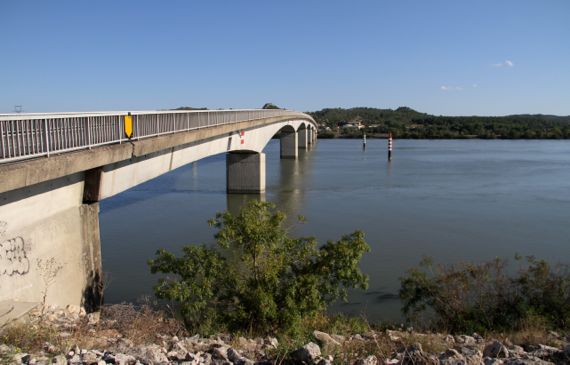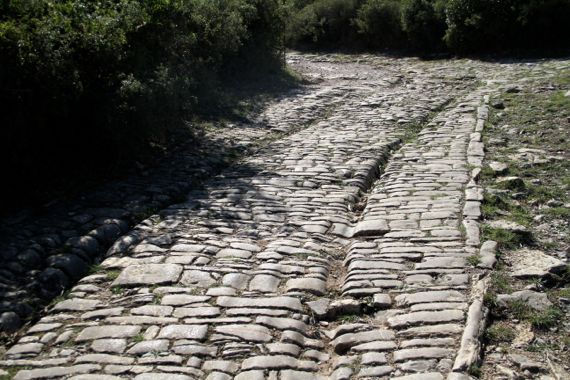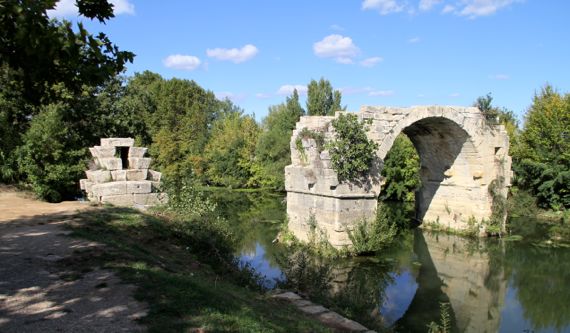
I keep thinking about the Rhône, and we keep visiting its environs, but I have yet to SHOW you the Rhône. So, here it is. A bridge downstream of Avignon—we were avoiding the afternoon traffic through town….
On our way back from…Ambrussum.
This is a Roman hillfort and surrounding community that basically was not trashed by later occupation. So rare.
Also, except for some foundation walls and part of the city-wall, there’s been no reconstruction here. I like that.
We had a hot walk (no rain today!) up the hill and on the trail, mostly looking at limestone chunks, with scattered sherdlets among the stone-crud. Parts of the trail followed the old Roman cobblestone ways.

The interpretation is that these cart-wheel wear patterns date to Roman times. Given the layer of overburden and lack of medieval/later occupation here, I’d buy that.
This hillfort is immediately adjacent to the River Vidourle, although the fortified area is a slog above the river. Still, the community needed a bridge to be effective in controlling trade, and so it was.

The bridge, Pont Ambroix, had a second standing arch maybe a century ago, the arch that connected to this bank. If you look into the water, you can see the large blocks that must have been part of the bridge, including on the other side of the standing arch. The vegetation growing among the stones doesn’t help preservation, either….
Ambrussum and other places we plan to visit as we proceed west are along the Via Domitia, the section of Roman road that went west from the Torino area (Po Valley, northern Italy), crossed the Alps, and dropped down to the upper Lower Rhône area, then went west paralleling the seacoast, and into the Pyrenees.
Title credit to The Guru.
1 October 2012 at 9:50 pm
Maureen Meyers says:
bridge to control trade…frontier perhaps?
nice title Guru
what, no food descriptions?
2 October 2012 at 7:31 am
Pooh says:
Are those cart tracks the same width as train tracks? Supposedly the (standard) guage railroad tracks are direct descendents of Roman carts (or was it chariots?).
I read this when I worked at the Corps of Engineers, but now I wonder why the chariots/carts would be standardized. I don’t have time right now to even do a Wiki search.
2 October 2012 at 11:56 am
Deb says:
Wow…LOVE that image of the cobblestone trail! Fantastic. Having fun seeing what you two are up to!
8 October 2012 at 9:09 pm
Kelley says:
Hey, no entry for the EIGHTH of OCTOBER??? You must think I never weigh in on your blog site, but alas, at least once a year my poor old Mom-brain remembers important dates and, ahem, checks ’em out on this trusty place. WHAT A SPECTACULAR TRIP! Love love love the images and the running commentary… keep it coming, and I look forward to much more when you return. BTW, Happy Happy!!